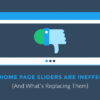
How to Write Website Content
Starting your own website is an exciting process, but copywriting can be daunting. Whether you’re selling products or service, your site will be the face of your brand. One of the most critical aspects of creating a successful website is writing the content. If writing about your business intimidates you, don’t worry. Even the most seasoned copywriters feel anxious about their content.
Copywriting is like public speaking. You stand on a stage, use your words to engage people and pray that they respond positively. If they do, then you’ve done a great job, but failure to impress could leave you red-faced. Nobody wants to deal with an unappreciative audience, so we’re here to help you go from zero to copywriting hero.
The Basics of Copywriting
So, what is copywriting? In its purest form, copywriting is using text to market and sell a product or service. Brands use copy to build their identity, attract traffic to their website and entice people to perform a specific action.
There’s a fine line between writing compelling copy and sounding like a sleazy salesperson. Copywriters must put their audience above everything else to increase leads and conversions. In fact, statistics published by HubSpot show that 63% of companies name lead generation as their biggest marketing challenge.
With so much to consider, you’re bound to feel intimidated, but anyone can write great copy. Follow these tips to write compelling website content.
Write For Your Audience
So many people think about what they want to say instead of what their audience wants to read. Your first step should be to think about the people your website will attract and research your target audience.
Imagine you’ve started a website that sells logo t-shirts for teenage boys. Your tone should be friendly and informal. However, if your company deals with finances, then your tone should be serious and informative. Speaking to your audience builds their trust and encourages brand loyalty.
There are many channels your audience will use to find your website. One of the most important is search engines such as Google. However, if you don’t optimise your site for searches, nobody will see it. Think about what people are likely to type into a search engine and tailor your keywords to match it. If you need some help, there are plenty of keyword tools available.

Benefits Sell, Features Don’t
Have you seen a make-up commercial? There are hundreds on TV each year, but each has one thing in common; they sell benefits. Think about mascara adverts and how they promise to give eyelashes length and volume. Marketers know that consumers buy mascara because it improves their appearance, not for the unique ingredients it has. Every product has a benefit, and this outweighs the features.
Customers don’t choose a mattress because it’s made of memory foam, they buy it for a good nights sleep. Consumers will always be willing to spend their money if a product offers them a benefit. This is why you must highlight the positive aspects of your product in your content writing.
Customers need to know what you’re selling but make sure you focus on the benefits it offers. A guarantee can be a fantastic call-to-action because it gives people faith in what you’re selling.
Clarity is Key
Website content writing is like having a direct conversation with a customer. Remember, you’re explaining what your website is about not writing a best-selling novel. There’s no need to channel your inner Shakespeare and fill your content with fancy words because consumers don’t want that.
People respond to clear and concise copy they can understand. Long descriptive streams of information won’t get their attention and decreases your conversion rates. Keep it simple and try to make your content writing like internal dialogue.
Use The Inverted Pyramid
Readers decide whether they want to read your content and many return to their search within seconds. Why? Because if relevant information isn’t at the top of the page, they don’t want to look for it. The inverted pyramid model shows how you should structure your copy.
- The lead, usually containing the who, what, when, where and how of the article.
- The body, which contains facts and further information, most of which is necessary, revealed in order of importance.
- Fluffy stuff of little importance, fading into oblivion…
Let’s use an emergency plumbing service as an example. The top of the page should include the company name, what they do and how their service is unique. Other relevant information should come next, such as customer reviews and the range of services they offer. The organisational structure has little relevance to the reader and should be at the bottom of the page.
Following the inverted pyramid model ensures the information that sells will reach potential customers.
Buyer Persona Strategy
Buyer Persona Strategy is a practice every copywriter should use, but many don’t. We’ve covered how important it is to know your audience, but if you want to impact your readers, become your audience. This technique involves performing research and creating a persona for your audience.
Imagine your company sells clothing to teenage girls. By using these buyer persona research tips, you can understand what they’re looking for and their pain points. You can then create a character based on your research, which makes your copywriting more effective.
If you get too caught up in the persona you may exclude other audiences. Use buyer personas to enhance your content writing but balance it with your overall marketing strategy. These helpful tips can help you understand buyer persona strategy in more detail.

Research to Be Ready
Research is a vital aspect of SEO copywriting. However, it goes much deeper than finding the right keywords. Research your own brand and think about its beginnings to gain a deeper understanding of how it could help consumers. You should perform extensive research on your competitors too.
Testing a competitors website is a great way to see if they’re missing something that you can capitalise on. Who are their social media followers? When do they post and how much engagement do they get? This information can shed some light on practices that work on your target audience and boost your brand’s identity.

Sell Your Headline
Headlines are so important! When you see an interesting headline, you want to read the content, right? Boring headlines turn people off but exciting headlines capture a readers attention. These headlines work best for copywriting:
- Headlines that contain trigger words appeal to readers emotions. Use Amazing, Discover, Free and Guarantee for a positive reaction.
- We love lists, so anything with numbers will attract readers.
- Appeal to their thirst for knowledge with guides and resources. Starting a headline with “Everything You Need to Know…” works well.
- Shock your readers with a statement. For example, “You Can Make Money and Never Work Again”. This would be ideal for a piece about working from home and being your own boss.
Remember, your headlines should apply to the topic you’re writing about. If we’d named this article “From Zero to Hero” and left out the relevant information, you’d most likely not click on it. A catchy headline can increase your traffic, so think of it as the face of your content writing.

Active Over Passive
Always use active voice over passive wherever you can. Readers find it more engaging as it speaks directly to them. Passive voice slows the reader down and it doesn’t create the sense of urgency and excitement active voice achieves.
These two examples show how active voice is more effective and engaging:
Passive – “Our contact details can be found by clicking here.”
Active – “Want to know more about us? Contact us here!”
See the difference? Use active voice wherever you can and try to avoid passive voice. Grammarly and other online tools highlight when you use passive voice and provide practical alternatives.
Break Up Your Text
Long streams of text aren’t appealing to readers and most won’t stay on your website. People often scan text for information, so it’s important to divide your website content into digestible chunks.
Break your text into sections using Headings and Sub-headings. Readers can scan the text to find what they’re looking for and your website copy will look more attractive. Sub-headings also help search engines find your content, so they’re vital when writing content for your website.
Bullet points are your new best friend because they capture a readers attention. Make sure you use them instead of long paragraphs of text.
Entice Your Readers
Calls to action ask a reader to perform a specific task. This could to look at a product or signing up to a mailing list. They help copywriters direct their visit to areas of the website and can be very effective if you use them correctly to increase leads and boost conversions.
Not ready to dive into the world of copywriting? There are many companies offering cost-effective content writing services and you can learn a lot from them. At Cheap Web Design, we have built thousands of websites and our team have written millions of lines of website content. We can write your website content for you as part of your web design or ecommerce project, taking into consideration the ultimate goal of your website.
Copywriting is a never-ending learning process, but the rewards are higher traffic levels, more conversion rates, and building something consumers want to be a part of.

A Picture Is Worth a Thousand Words
Why do websites use so many photos? Because research shows that the brain responds to pictures more than text. Charts and info-graphics are useful for explaining complex information and readers can process it.
Pictures also make your copywriting look appealing and serve as a visual teaser for your content in each section. You don’t need to be a graphic designer to create unique graphics for your website. Infographics are also a very popular method of visually explaining facts and information. If you’d like an infographic designed, please contact us for a quote.
Website Content Writing Services
If you’ve read through our guide and given it your best shot or perhaps you simply don’t have time to research, write and optimise your website content for SEO, then we can help. We have a team of highly experienced content writers who are able to write copy for website pages, blog posts, articles or even traditional print formats such as brochures and leaflets.
As quality, informative content is now the key to online marketing and SEO, it’s important that your blog or news section on your website is regularly updated. We can offer competitively priced copywriting services on a monthly, weekly or even daily basis to ensure that your website grows to become a wealth of information for your target audience.
Quote “CWDWRITE10” when speaking to our team to receive a 10% discount on any monthly content writing package over the value of £100+VAT per month.










